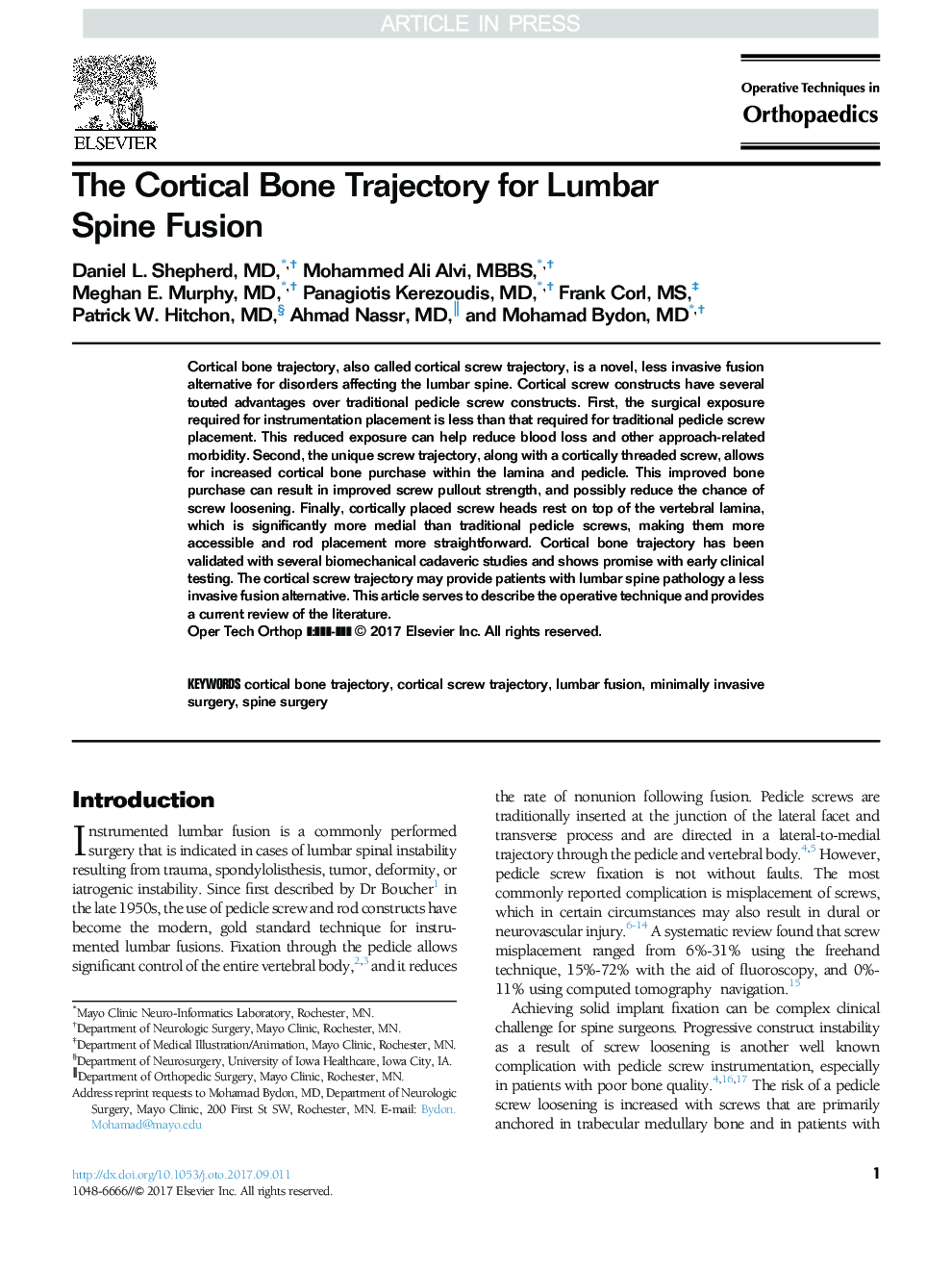| Article ID | Journal | Published Year | Pages | File Type |
|---|---|---|---|---|
| 8801818 | Operative Techniques in Orthopaedics | 2017 | 6 Pages |
Abstract
Cortical bone trajectory, also called cortical screw trajectory, is a novel, less invasive fusion alternative for disorders affecting the lumbar spine. Cortical screw constructs have several touted advantages over traditional pedicle screw constructs. First, the surgical exposure required for instrumentation placement is less than that required for traditional pedicle screw placement. This reduced exposure can help reduce blood loss and other approach-related morbidity. Second, the unique screw trajectory, along with a cortically threaded screw, allows for increased cortical bone purchase within the lamina and pedicle. This improved bone purchase can result in improved screw pullout strength, and possibly reduce the chance of screw loosening. Finally, cortically placed screw heads rest on top of the vertebral lamina, which is significantly more medial than traditional pedicle screws, making them more accessible and rod placement more straightforward. Cortical bone trajectory has been validated with several biomechanical cadaveric studies and shows promise with early clinical testing. The cortical screw trajectory may provide patients with lumbar spine pathology a less invasive fusion alternative. This article serves to describe the operative technique and provides a current review of the literature.
Related Topics
Health Sciences
Medicine and Dentistry
Orthopedics, Sports Medicine and Rehabilitation
Authors
Daniel L. MD, Mohammed Ali MBBS, Meghan E. MD, Panagiotis MD, Frank MS, Patrick W. MD, Ahmad MD, Mohamad MD,
